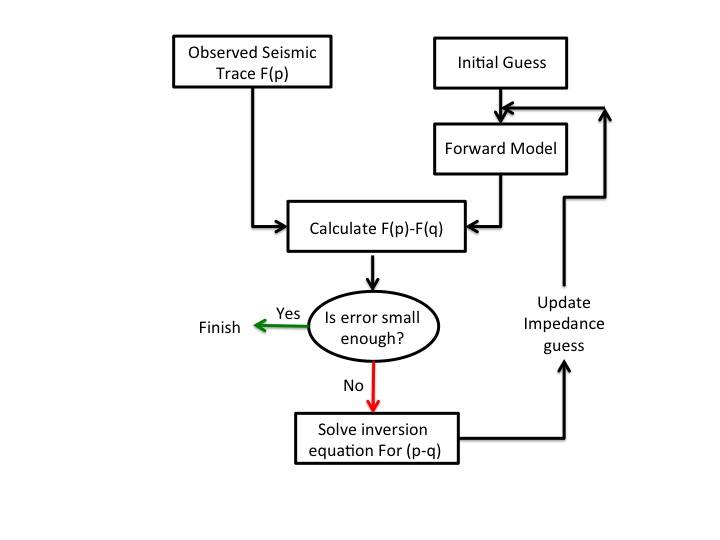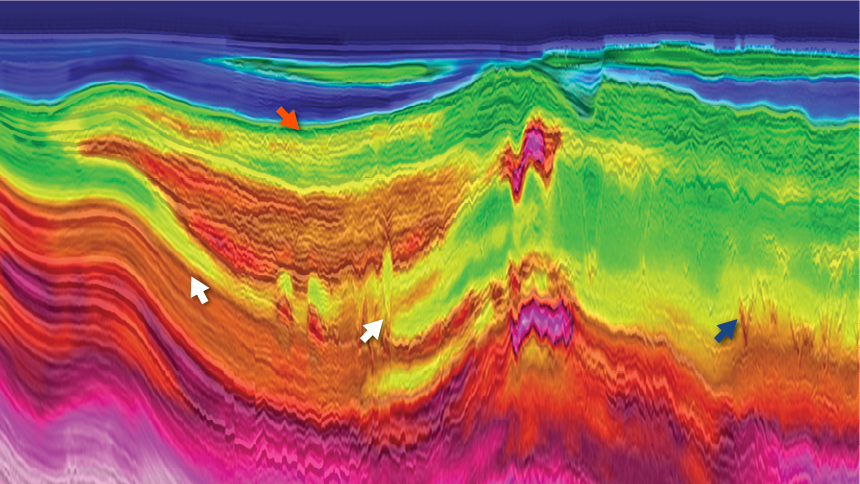
In the quest for hydrocarbons, the oil and gas industry continually seek advanced techniques to improve exploration success rates, optimize production, and mitigate risks. One such pivotal technique is seismic inversion, a sophisticated geophysical process that has revolutionized subsurface exploration and reservoir characterization.
Understanding Seismic Inversion
Seismic inversion workflow is the process of transforming seismic reflection data into a quantitative rock-property description of the subsurface. It involves converting the acoustic impedance data obtained from seismic surveys into detailed models that describe the geological and petrophysical properties of rock formations. These models provide critical insights into the porosity, lithology, fluid content, and other properties of potential reservoirs.
The Process of Seismic Inversion
Data Acquisition:
The process begins with the acquisition of seismic inversion data through surveys. Seismic waves are generated and their reflections off subsurface layers are recorded by sensors. This raw seismic data serves as the foundation for seismic inversion.
Pre-processing:
The acquired seismic data undergoes pre-processing to remove noise and enhance signal quality. This step ensures that the data is suitable for inversion and subsequent analysis.
Inversion:
The core of the process involves the inversion of the pre-processed seismic data. Various inversion algorithms and techniques are applied to transform seismic reflection data into quantitative models of the subsurface. These models provide detailed information about rock properties and fluid distributions.
Interpretation:
Geophysicists and geologists interpret the inverted data to generate accurate subsurface models. These models are crucial for identifying hydrocarbon reservoirs and understanding their characteristics.
Importance in the Oil and Gas Industry
Enhanced Reservoir Characterization:
Seismic inversion significantly enhances reservoir characterization by providing detailed information about the elastic properties of rocks. This enables geoscientists to accurately delineate reservoir boundaries, identify fluid types, and estimate reservoir quality. Improved reservoir characterization leads to more informed decision-making and efficient resource management.
Increased Exploration Success Rates:
By reducing uncertainties associated with seismic data, seismic inversion improves exploration success rates. It allows for the identification of subtle geological features, such as stratigraphic traps and thin beds, that may not be visible in traditional seismic interpretation. This precision helps in pinpointing drilling targets more accurately.
Optimized Production and Recovery:
Detailed subsurface models derived from seismic inversion guide the optimal placement of wells and enhance reservoir management strategies. By understanding the distribution of hydrocarbons and the properties of the reservoir rocks, operators can design effective production plans and recovery methods. This optimization ensures maximum hydrocarbon recovery and cost-efficiency.
Risk Mitigation:
Seismic inversion plays a crucial role in assessing and mitigating geological risks. By providing a clearer picture of subsurface conditions, it reduces the likelihood of encountering unexpected geological hazards during drilling operations. This enhances the safety and reliability of exploration and production activities, minimizing the risk of costly setbacks.
Economic and Environmental Benefits:
The precision offered by seismic inversion leads to more efficient extraction processes, reducing the environmental footprint of exploration and production activities. By minimizing the number of dry wells and optimizing resource extraction, companies can achieve significant cost savings and operate more sustainably. This balance of economic efficiency and environmental responsibility is essential for the industry’s long-term viability.
Seismic inversion is a transformative technique in the oil and gas industry, providing unparalleled insights into subsurface geology. Its ability to enhance reservoir characterization, improve exploration success rates, optimize production, mitigate risks, and offer economic and environmental benefits makes it indispensable for modern hydrocarbon exploration and production. As the industry continues to face complex challenges, seismic inversion stands as a critical tool in unlocking the full potential of subsurface resources.
Understanding and leveraging the power of seismic inversion can lead to more efficient and responsible exploration and production, ensuring the sustainable development of the world’s energy resources.
By harnessing the full potential of seismic inversion, the oil and gas industry can navigate the complexities of subsurface exploration with greater precision and confidence, paving the way for a more efficient and sustainable future.










